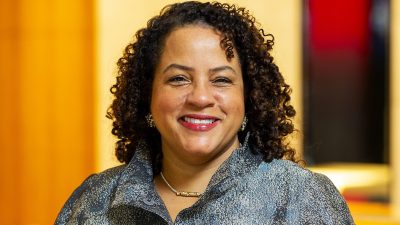Support Free Resources for the Field:
AAM provides all of our DEAI resources for free to the museum field to provide the greatest amount of access possible. In these challenging times, we ask that if you can, consider supporting this work by making a donation or becoming a member of AAM. Thank you for your much-needed support.
Advancing racial and ethnic diversity, equity, accessibility, and inclusion on boards can be a daunting task for any institution. No matter where you are in your journey, questions arise when doing DEAI work, and it’s hard to know where to start or what to prioritize. It is critical to embed racial equity into every stage and all facets of museum operations in order to effect lasting change. To do this, though, we must start from wherever we are in our learning journey, with the people we have on our boards, on our staff, and in our communities right now.
Click here to download this guidance in PDF format.
How to think about a racial equity and inclusion plan
What is a racial equity and inclusion plan?
A racial equity and inclusion plan serves as a living document that allows both individuals and institutions to plan, execute, and implement different actions and strategies to advance race equity and inclusion, and shift culture to center equity. It often functions similarly to a high-level project plan, but because equity work is non-linear in nature, the document itself should not be static.
What is the goal of a racial equity and inclusion plan?
The goal of a plan is both to help determine and track specific board- and institution-level goals related to building more diverse, equitable, and inclusive museums.
Why are they important?
Just like with any other strategic initiative, project, or institutional goal, work around equity and inclusion must have clear and stated goals that are understood both at the board and institution-wide level. Without racial equity and inclusion plans, museums and their boards would not be able to measure and track progress and work outcomes. It also provides flexibility for regular monitoring and revision of your plan. For an example of what a phased plan may look like, see the sample museum reopening plans in the preparing to reopen section of AAM’s guide of COVID-19 resources & information for the museum field.
Questions to ask
Are you using shared language?
When creating racial equity and inclusion plans, museums and their boards must make sure they have a clear understanding of shared language around terms like diversity, equity, accessibility, and inclusion. It is often said that there are as many different definitions of these and related terms as there are people in the conversation. Defining terms to ensure mutual understanding is critical to progress.
Do you have shared context?
Just like with shared language, organizations and their people need to operate under the same general knowledge, through partaking in shared learning experiences around DEAI topics. Those shared learning experiences might range from staff reading articles together that prompt organization-wide conversations about equity, to institution-wide trainings on unconscious bias or the history of race and racism in the United States. (Great resources for the latter can be found at Race Forward, Racial Equity Institute, and People’s Institute for Survival and Beyond (PISAB).)
Are you willing to allocate time and money?
Equity and inclusion work, just like any other work that takes place in a museum, requires resources. When getting started, the amount of time and funds allocated to this work is less important than the fundamental understanding that in order to drive and sustain change, museums must be willing to allocate both time and money.
Do you have equity champions?
This work is hard, and often lonely. There will be pushback, there will uncomfortable conversations, and there will be hard truths that you uncover about yourself and your institution. Having a community of people to rely on for support when things get tough, as well as to advance the work when you need a break, is critical for the lasting sustainability of DEAI work.
Strategies for goal-setting & plan development
Start with the basics
Creating shared language and context; creating a learning agenda around specifics concepts like structural racism, white privilege, and unconscious bias; and determining the proper allocation of resources are great ways to start your racial equity and inclusion plans.
Another essential starting point is to disaggregate board and organizational data by race. When thinking about measuring and tracking progress around diversity, equity, accessibility, and inclusion, museums need to make sure they have these baseline measures to track against, so they know when and how they are making progress.
Build momentum
For museums that have started their equity and inclusion journey, continuing to build momentum towards achievable goals can be a critical driver of continued success and goal attainment. This work is like building a muscle—when you train it, the muscle gets bigger and you’re able to lift more weight. The more equity and inclusion work you do, the bigger your equity “muscle” gets, and, though the work is never done, this can build organizational buy-in, increase morale, and help sustain you when things get more difficult.
Pick a particular challenge
Some museums prioritize specific goals that have been challenges or roadblocks for them in achieving more equity and inclusion. For example, maybe your museum has had difficulty creating and retaining a diverse board candidate pipeline, has struggled with embedding race equity performance measures within annual performance reviews, or hasn’t been able to create meaningful organizational learning plans around DEAI. Think hard about the one goal that’s eluded you instead of trying to do everything at once.
Choose a specific process to scrutinize
A great starting strategy is to pick a process that is used often by the organization or board and analyze it to determine if it is producing truly equitable outcomes. Examples could be systems like the hiring process, board recruitment and onboarding procedures, or an internal decision-making process. To help in this analysis, look for tools like racial equity impact assessments.
Last updated June 12, 2020









Mil gracias por las informaciones, no hay otra Institución como Uds. que nos facilitan conocimientos innovado, que Dios le bendiga a cada uno de los Funcionarios que hacen posible .